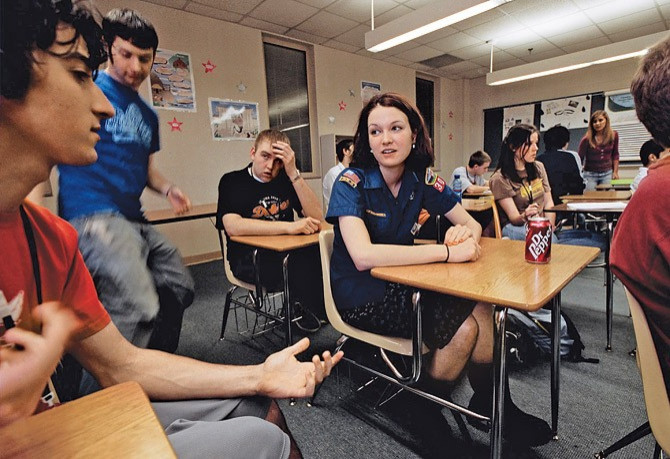U.S. Teen Unemployment at Unprecedented Levels
ANALYSIS

Unemployment in the U.S. has been stubbornly high and presents the largest single obstacle to the re-election hopes of Barack Obama. But joblessness among Americans who cannot yet vote – teenagers – are at levels that are both staggering and unprecedented.
According to data from Employment Policies Institute (EPI), a non-profit research organization, joblessness among teens stayed above 20 percent in 35 states through the summer of 2011.
The teen jobless rate is two to three times worse than the national average.
Seven states and the District of Columbia are still averaging teen unemployment at a level exceeding 30 percent.
In the nation’s capital, almost one-half of people (49.3 percent) between the ages of 16 and 19 are jobless this summer.
On the whole, according to EPI, exactly one-quarter (25.0 percent) of the nation’s teenagers were out of work in July 2011.
Over the past five years, this figure has spiked in tandem with the recession that has paralyzed parts of the national economy.
In July 2006, the teen jobless figure stood at 15.5 percent.
The nation’s teens have just experienced their third summer in a row with an unemployment rate above 20 percent,” said Michael Saltsman, research fellow at the EPI.
“As a result, thousands have missed out on the valuable career experience that comes from an entry-level job.”
According to EPI, the five states with the highest unemployment among teenagers comprised Nevada (34.9 percent); California (34.1 percent); North Carolina (33.7 percent); Washington state (33.0 percent); and Missouri (31.9 percent).
Perhaps not coincidentally, Nevada and California have both suffered mightily from a collapse in the housing market and the crippling of the construction industry. This has likely damaged the local retail industries, which tend to hire a lot of teenagers, especially over the summer.
“Joblessness among teens is at unprecedented levels,” said Stephen Bronars, a senior labor economist at Welch Consulting in Washington D.C.
“Many economists use the employment-to-population ratio, rather than the unemployment rate, to measure the jobs situation for teens. The jobless crisis for teens is [actually] understated by the unemployment rate -- this is because discouraged workers, and others who are not looking for work because they don't think they will receive a job offer, are not counted as unemployed by the Bureau of Labor Statistics. Today only about one in four teens have a job.”
Bronars finds the data extremely troubling.
“The primary reasons are a severed economic downturn, a weak recovery, and a more than 40 percent increase in the minimum wage immediately prior to the downturn,” he said.
“The unemployment rate among teens is usually higher than among prime working age adults, and recessions tend to have a more negative impact on jobs for teens than for adult workers. Nonetheless the job losses among teens have been unusually severe over the past 5 years.”
Bronars also indicated that as recently as 2000, 45 percent of teens were employed.
“At no time between 1965 and 2000, did the annual average percentage of teens who were employed fall below 40 percent,” he said.
“We have never experienced this amount of joblessness among teens.”
Bronars added that there are 5 million fewer people employed today than there were five years ago -- there are 2 million fewer teens working than five years ago.
“This is a staggering figure because teens comprise less than 4 percent of the labor force but account for about 40 percent of the employment losses since 2006,” he noted.
EPI also attributes rising teen joblessness partially to the “mandated wage hikes that policymakers have forced on small businesses. Economic research has shown time and again that increasing the minimum wage destroys jobs for low-skilled workers while doing little to address poverty.”
When minimum wages rise, EPI noted, “employers frequently cut down on hiring teens who typically fill lower-priority positions. Nearly half of all minimum wage earners are teenagers or young people still living with their parents. Most of the work still gets done, but customers may get stuck standing in longer lines, and teens suffer because they’ve been priced out of the opportunity to work.”
Saltsman added: “To avoid another bummer summer for our nation’s youth, policymakers should avoid passing new wage mandates in the name of job-creation that will raise the cost to hire and train these less-experienced jobseekers.”
© Copyright IBTimes 2024. All rights reserved.





















